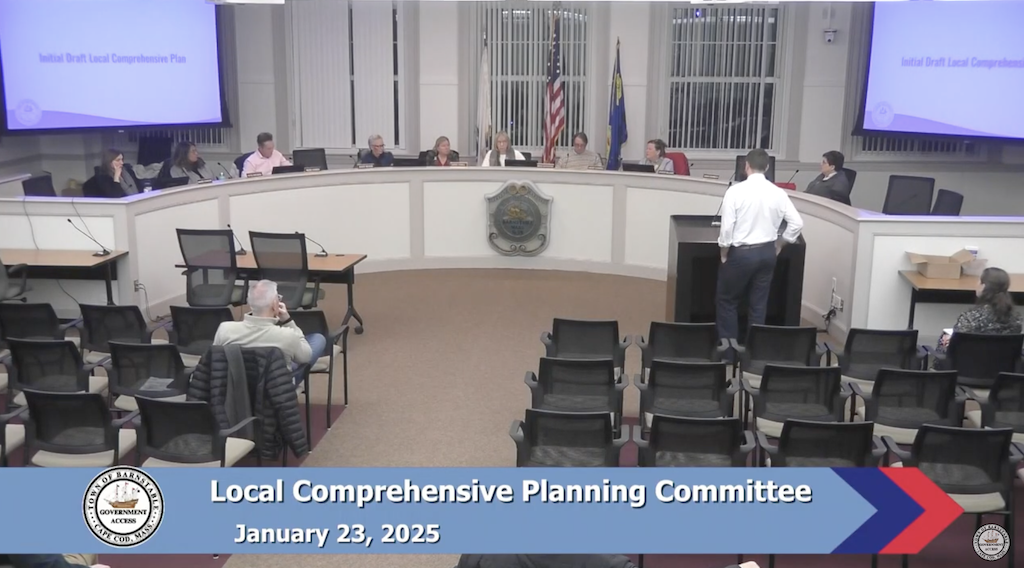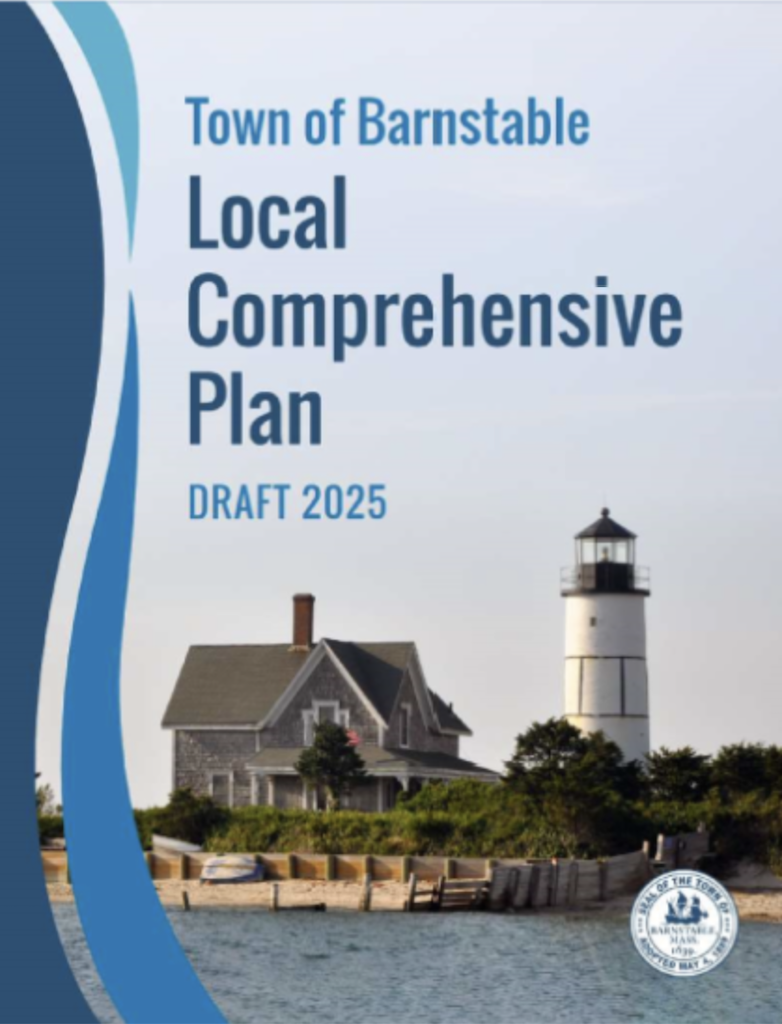Local Comprehensive Plan | Jan 23, 2025
The committee reviewed and discussed the draft of Barnstable's Local Comprehensive Plan (LCP), including future land use maps and an action plan. The meeting also focused on plans for further public input and the meeting schedule.

The Draft Plan is 344 pages. Read it all or look for topics important to you by going to this page, scrolling to the bottom for the Jan 23 2025 meeting material, and scrolling to the Draft Plan.

Watch the meeting. AI generated summary of meeting video below. Corrections are welcome; see contact page.
The meeting focused on review and discussion of the draft of Barnstable's Local Comprehensive Plan (LCP), including future land use maps and an action plan. The meeting also focused on plans for further public input and the meeting schedule.
Key Points
- Public Comment: Several members of the public provided comments, raising concerns about the inclusion of offshore wind energy in the plan, advocating for more public input before finalization, and emphasizing the need for inclusivity in the planning process.
- Future Land Use Maps: The committee reviewed the final future land use maps, which were divided into regulatory areas (preserving existing zoning and growth incentives) and study areas (identifying areas for future development and study, such as Independence Park and the Cape Cod Community College area).
- Draft LCP Review: The committee began reviewing the draft LCP, which includes sections on introduction, existing conditions, key issues and needs, target action plans, and an appendix. Concerns were raised about the plan's length and usability, with suggestions to prioritize key information and improve accessibility.
- Public Input and Outreach: The committee discussed strategies for further public input, including Zoom sessions with staff, outreach to town counselors, and community meetings in March.
- Meeting Schedule: The committee discussed and adjusted their meeting schedule to facilitate the review process and public input, aiming for a final plan by May to present to the planning board and Town Council.
Highlights
- Significant public participation and diverse perspectives shared during the public comment period.
- Detailed discussion of the future land use maps and their implications for Barnstable's development.
- Collaborative effort between the committee and staff to refine the LCP based on feedback.
- Comprehensive plan for public outreach and engagement to ensure broad community input.
- Acknowledgement of the extensive work undertaken by staff and committee members.
Summary of Public Comment on "Future Land Use Map"
The Town of Barnstable is currently undergoing a comprehensive planning process to update its Local Comprehensive Plan (LCP). This includes a review of the Future Land Use Map, which outlines the town's vision for future development. The public has submitted numerous comments on the draft plan, expressing concerns and suggestions for various aspects of the town's future.
Key Concerns
Preservation of Village Character: Many residents strongly oppose changes to zoning that would allow for multi-unit housing in historic village centers. They argue that such changes would negatively impact the character of the villages, increase traffic and parking issues, and strain existing infrastructure.
Single-Family Zoning: There is widespread support for preserving single-family zoning in residential neighborhoods. Residents fear that allowing denser development will lead to increased traffic, parking problems, and a loss of the town's unique character.
Short-Term Rentals: Many residents are concerned about the impact of short-term rentals (STRs) on housing availability and affordability. They advocate for stricter regulations to limit STRs and ensure that housing remains available for year-round residents.
Housing Affordability: While acknowledging the need for affordable housing, residents are wary of proposals that would significantly increase density or change zoning in existing neighborhoods. They prefer solutions that focus on building affordable units on town-owned properties or exploring alternative approaches like expanding the Accessory Dwelling Unit program.
Environmental Protection: There is a strong emphasis on protecting the town's natural resources, including groundwater quality, shellfish populations, and the Great Marsh. Residents advocate for measures to address pollution from septic systems, improve water quality, and preserve critical habitats.
Infrastructure: Concerns have been raised about traffic congestion, lack of sidewalks and bike paths, and the need for improved parking facilities. Residents call for investments in infrastructure to enhance safety and accessibility for pedestrians and cyclists.
Key Suggestions
Preserve Village Centers: Maintain the existing character of village centers and surrounding neighborhoods by resisting changes to zoning that would allow for denser development.
Protect Single-Family Zoning: Retain single-family zoning in residential areas to preserve the town's character and prevent overdevelopment.
Address Housing Affordability: Explore alternative solutions to increase affordable housing options without significantly altering existing zoning or increasing density.
Prioritize Environmental Protection: Implement measures to protect groundwater quality, shellfish populations, and the Great Marsh.
Improve Infrastructure: Invest in infrastructure improvements to address traffic congestion, enhance pedestrian and cyclist safety, and improve parking facilities.
Overall, the public comments highlight a strong desire to preserve the town's unique character, protect its natural resources, and ensure that future development is sustainable and responsive to the needs of residents.
